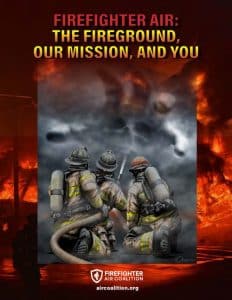
Firefighter Air Safety & Fireground Operations in Pacific Northwest
December 18, 2024

Firefighter Air Safety
Firefighter Air Safety Training
Firefighter air safety is the focus of the firefighter training the Meridian Fire Department in partnership with the Firefighter Air Coalition, the nation’s leading authority on firefighter air management, will host for two intensive days in Meridian, ID.
Within two days of registration for this training, numerous firefighters registered from Washington, Oregon, Utah and Idaho,” noted Chief Kris Blume of the Meridian Fire Department. “It is an understatement to say this training is about health and safety; for firefighters, it’s about life and living.”
The training will focus on the fundamental elements of managing air during fireground operations, physiological resiliency while on compressed air, tactics and operations in high rise and big box structures, and technology to support all of these.
Across American, the building landscape is changing. In urban areas with limited space, high-rise buildings maximize land use. Conversely, rural areas are being consumed by industrial warehousing and distribution centers. High rise, big box, warehouses, distribution centers, college campuses, hospitals – just to name a few – are challenging the air supply for firefighters in this oversized and mega tall buildings and campuses. All of these building types are challenges for firefighter tactics and operations because of their mere size.
When a bottle of compressed air may last 30 minutes, and one-third is reserved to exit these vast structures for more air, firefighters’ physical capabilities are stressed, especially when lives are at risk. Chief Blume acknowledges, “We can’t halt progress, so we must learn to navigate through these new challenges to protect ourselves.”
Air Management: The Fireground, the Mission and You
During this two-day session, firefighters will be introduced to an air standpipe system, the Firefighter Air Replenishment Systems (FARS), to accommodate a continuous supply of breathable air in these environments that allows for the continuation of the fire attack without losing personnel to change out an air bottle or tax additional staff with hauling bottles to below or above the fire floor.
Other technologies such as gas detection to safeguard firefighters from breathing toxicants and carcinogens, and HUDs (Heads Up Displays) that visually display remaining air supply, will also be introduced. “We are finding ourselves in an environment where we can no longer perform firefighting operations without advanced technology,” said Blume.
Among the experts leading this two-day free training session are Cap. Mike Gagliano, (retired) Seattle Fire Department, Capt. Mike Dugan, (retired) New York Fire Department. Deputy Chief of Operations, Jason Krusen, Charleston Fire Department, Chief Brian Schaeffer, Spokane Fire Department, FF Ric Jorge (retired), Palm Beach County Fire Department, Deputy Commander Jack Murphy, Bergen County Fire Rescue, and Lieutenant Paul Combs (retired) Bryan Fire Department.